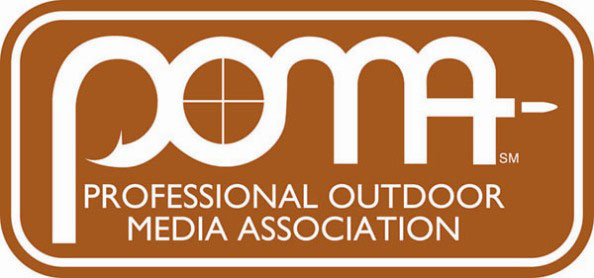We lose a dear friend and true pioneer
Grits Gresham 1922 - 2008
Internationally Recognized Outdoorsman Grits Gresham Dies at 85
Dear Industry Friends:
Today we lost an outdoor journalism pioneer, teacher, advocate, role model and great friend. Grits Gresham passed away today at the age of 85.
2/18/2008 — NATCHITOCHES, La. — Grits Gresham, noted outdoorsman, writer, author, and television personality, died Monday (Feb. 18), in his hometown of Natchitoches, after a lengthy illness at the age of 85.
Gresham served as field host and producer for “The American Sportsman” television series on the ABC network, host of “Shooting Sports America” on ESPN, was shooting editor of Sports Afield magazine for 26 years, and was published in such wide-ranging magazines as Sports Illustrated and Gentleman’s Quarterly. He authored eight books, but may be best known for his role in the series of commercials for Miller Lite beer.
Gresham was the fisherman among the athletes who made “Tastes Great, Less Filling” marketing buzzwords for more than a decade.
His affable personality and love for the outdoors combined with his trademarks, a driftwood hat and white muttonchops, to make him a recognizable figure around the world. Entertainers such as Bing Crosby, Burt Reynolds, Jonathan Winters and Andy Griffith joined him on hunting and fishing trips, with a wide array of sports figures such as Olympic decathalon gold medalist Bruce Jenner, Pro Football Hall of Fame defender Buck Buchanan and 1976 NFL Most Valuable Player Bert Jones. Some celebrities maintained friendships with Grits, with quite a few traveling to visit him through the years at his home on the banks of Cane River Lake in Natchitoches.
Arrangements are being made through the Blanchard St. Denis Funeral Home in Natchitoches, at 318-357-8271.
http://www.blanchardstdenisfuneralhome.com.
The service will be at 10 a.m. Friday at the funeral home. Visitation will be from 5-9 p.m. Thursday evening.
In lieu of flowers, the family asks that donations be made to The Gresham Collection at the Louisiana Sports Hall of Fame Foundation, 321 Bienville Street, Natchitoches, LA 71457, or in the name of Grits Gresham to the Alzheimer’s Association.
Grits traveled the world for his work, and he particularly enjoyed his many trips to various African countries as well as fishing and hunting in South America. He served in the U.S. Army Air Corps during WWII.
A tireless worker for conservation, he was one of the first public voices bringing attention to the loss of wetlands along the Louisiana coastline, an area where he did much of his graduate work while at LSU.
Gresham’s books include “The Complete Book of Bass Fishing,” “Fishes and Fishing In Louisiana,” “Fishing and Boating in Louisiana,” “The Sportsman and his Family Outdoors,” The Complete Wildfowler,” “Grits on Guns,” and “Weatherby: The Man, The Gun, The Legend.”
One of Gresham’s proudest moments as an outdoor journalist came during an interview with President Ronald Reagan. The President shared with Grits a story no one in the national media had heard, that when he was a broadcaster in Des Moines, Iowa, Reagan had used a Colt pistol to save a nurse from a mugging on the street. After the story broke, the nurse came forward and confirmed the tale, although she did not know until then that the young man who had saved her with a gun so many years before had turned out to be the famous actor and United States President.
Born Claude Hamilton Gresham, Jr. on June 21, 1922, in Spartanburg County, S.C., Grits was the fourth of five children of Claude H. Gresham and Belle Hill Gresham. He attended Blue Ridge School for Boys, the University of North Carolina, Vanderbilt, Yale and received his B.S. and M.S. from Louisiana State University.
He is survived by his sons, Kent and Tom Gresham, and a daughter, Barbara Gresham Hammerman, along with three sisters and three grandchildren.
Gresham’s many awards include the Winchester Outdoorsman of the Year, Alumnus of the Year in the LSU School of Forestry and Wildlife Management; induction into the Louisiana Sports Hall of Fame and LSU Hall of Distinction; awards for excellence in writing and contributions to conservation from the Outdoor Writers Association of America, and an honorary doctorate of humane letters from Northwestern State University. In 2006 he received the only Lifetime Achievement Award from the National Shooting Sports Foundation, which then established, with the Professional Outdoor Media Association, an ongoing “Grits Gresham Shooting Sports Communicator” award.
Last summer, his family announced the donation to the Louisiana Sports Hall of Fame Foundation of a wide array of items from “The Gresham Collection,” including memorabilia, writings, photography, outdoor art and audio and video recordings by Grits and his late wife Mary.
The Hall of Fame Foundation is currently engaged with the state of Louisiana and the Louisiana State Museum System to develop an innovative Louisiana Sports Hall of Fame museum in Natchitoches. The items donated by the Gresham family will be featured in the mutli-faceted museum, which had ground-breaking ceremonies Jan. 10.
Items to be included in the collection from the entire scope of the life and work of Grits and Mary Gresham include ABC-TV’s “American Sportsman” series memorabilia, “Miller Lite All Stars” memorabilia, Crosby Golf Tournament memorabilia; firearms, fishing gear, camping, birding and boating items; an array of awards, books, writings, recordings, illustrations, art and photography; and Grits’ trademark, “The Hat.” Also to be included are National Duck Stamp process items, memorabilia from Gresham’s international travel, as well as his history and formative years, which included a collegiate baseball career before World War II and a professional baseball contract signed in 1946 with the Chicago Cubs organization.







